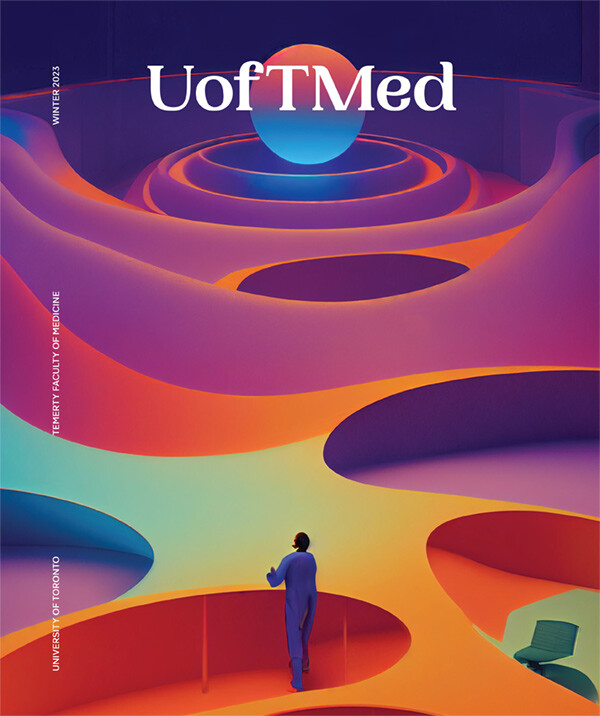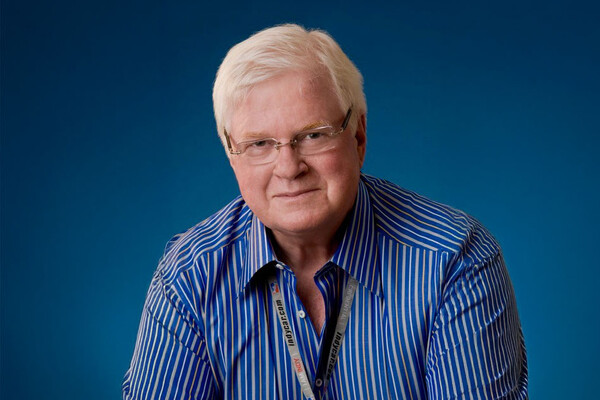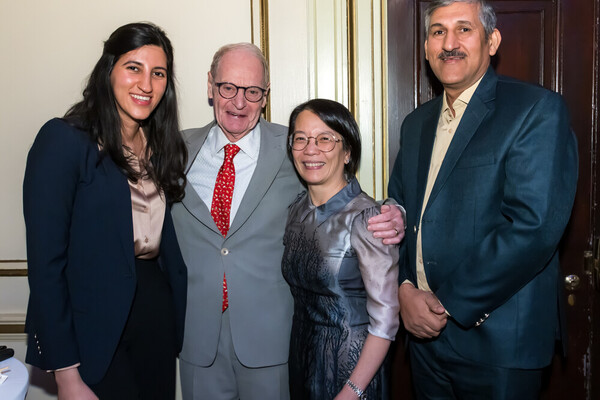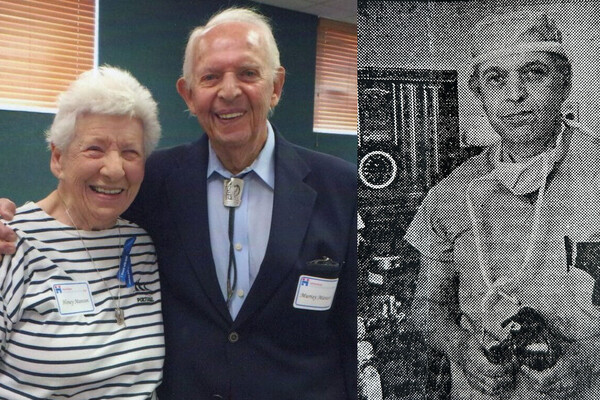Main Second Level Navigation
Breadcrumbs
- Home
- News & Events
- Recent News
- AXS Studio: Making Moves in Biomedical Communications
AXS Studio: Making Moves in Biomedical Communications

Sonya Amin (MScBMC ’03) co-founded AXS Studio, a biomedical communications company that specializes in 3D animation, together with two of her University of Toronto classmates. Here she discusses how Temerty Medicine’s MScBMC Program helped the trio launch AXS, the company’s growth from a three-person operation to a fully-realized venture, and the impact of her and her partners’ work on health care.
What made you decide to pursue the MScBMC?
I’ve always been into drawing. While doing my BSc in developmental biology at U of T, I would doodle diagrams in my lab notes and use little cartoons to illustrate ideas in projects and presentations. I even self-published science comics, photocopying them at Robarts Library.
After my undergrad, I started working in a lab based out of U of T’s Medical Sciences Building. One day I decided to take a different route home through the building and ended up in the biomedical communications (BMC) hallway. There was all this cool student art on the walls, and I was like “Wait — you can do this for a living? You can draw things and make visuals for teaching science?” It was an absolute epiphany for me.
Tell me about the program and its curriculum.
At the time, biomedical communications was a boutique two-year program — there were eight students in my cohort. In the first year we learned all about anatomy, pathology, the principles of visualization and storyboarding. In second year, you choose to specialize in either interactive design — websites, games, etc. — or 3D animation. Temerty Medicine had a partnership with Sheridan College then, and that was where we learned our software skills using Autodesk Maya, a 3D computer graphics program.
You formed AXS Studio with two of your classmates shortly after graduation, how did that come about?
During second year, I carpooled with two of my animation classmates, Eddy Xuan (MScBMC ’03) and Jason Sharpe (MScBMC ’03). Jason drove us in his grandma's 1990 Ford Taurus — we named her G.G. Mae. Driving there and back every day, we would come up with all sorts of dreams and schemes, thinking “wouldn’t it be cool to one day start our own company.”
In 2005, two years after we graduated, the U of T BMC program leadership — Linda Wilson-Pauwels (BSc. Art as Applied to Medicine ’86) and Nick Woolridge (BScBMC ’92, MSc ’96) — were approached by the science adviser for the sci-fi TV show ReGenesis. The show was about an organization that investigated problems and crimes of a scientific nature, but the animators they were working with didn’t really understand the nuances of how microorganisms should move. BMC faculty consulted on the show and put them in touch with Eddy, Jason and me to bring those first animations to life.
We worked on ReGenesis for three seasons. At first we were each working from home and bringing our computers over to Eddy’s basement when we needed to work together. It was exhausting, but a lot of fun. We soon moved into the business incubator at the MaRS Centre. That’s what really kickstarted the company.
Now you’re 19-people strong and were working in a downtown brick-and-beam building before the pandemic hit — how did the company evolve to become that?
In the beginning it was go, go, go. Each of us were starting our families, so we were all motivated to see AXS succeed. Through ReGenesis we built up a portfolio of work, and we got our company website up and running and started to field more requests for new clients. For the first few years it was hectic. We didn’t have time to look any further than a few months down the road in terms of planning.
Eventually we’d built up cashflow to hire our first contractor and then our first employee, who’s still with us. We also met our accountant during our time at the MaRS incubator, who also became our business adviser. He’s watched us grow from a scrappy trio to the company we are now.
How is what you’re doing advancing health care?
We’ve actually thought about this a lot. Our vision statement is “to bring credibility, clarity and delight to science visualization,” and coming up with that was a good year in the making. I think those three words — credibility, clarity, delight — capture what we strive to do to help advance the field.
Science communications can be confusing and that can turn people off. But if we can communicate information in a way that’s clear, as well as visually engaging and maybe even entertaining, then we can drive home important lessons. The fact that we all went to school for this is also key. Are we experts in every aspect of medical science? Of course not. But the BMC program really taught us the importance of good research: how to identify good resources and back our work up with facts. Ultimately, what we're trying to do with our work is empower people with knowledge so they can then make informed decisions — and we have the education and training to do that.
You’re at the intersection of art and science — how are each represented in your work?
What we're doing is art, but science plays into it in a few ways. We’re often asked to authentically animate something that can’t actually be seen, so we have to research what it looks like and how it works. For example, if it’s a protein, we’ll go to the protein databank and look for X-ray crystallography data to determine its shape.
We also rely on principles of human perception and how humans react to visual stimuli to effectively tell a story. Let’s say we want our audience to look from one protein to another, we'll make that second protein glow or make it move a bit faster than the first. To be successful communicators and tell a clear story, we have to appeal to our audiences in terms of art and design.
Do you still draw for fun?
Well, I’m a mommy now, so most of my drawings are simple line drawings of animals or ninjas my kids can colour in. But they’re picking up the drawing bug now, and that’s rewarding and joyful to see.
To see how AXS Studio brings scientific ideas to life, view a gallery of work on their website.

UofTMed magazine
For more stories that explore the interplay between the arts and science of medicine, check out Winter 2023 edition of UofTMed magazine – The Arts Issue , now available online.
News


